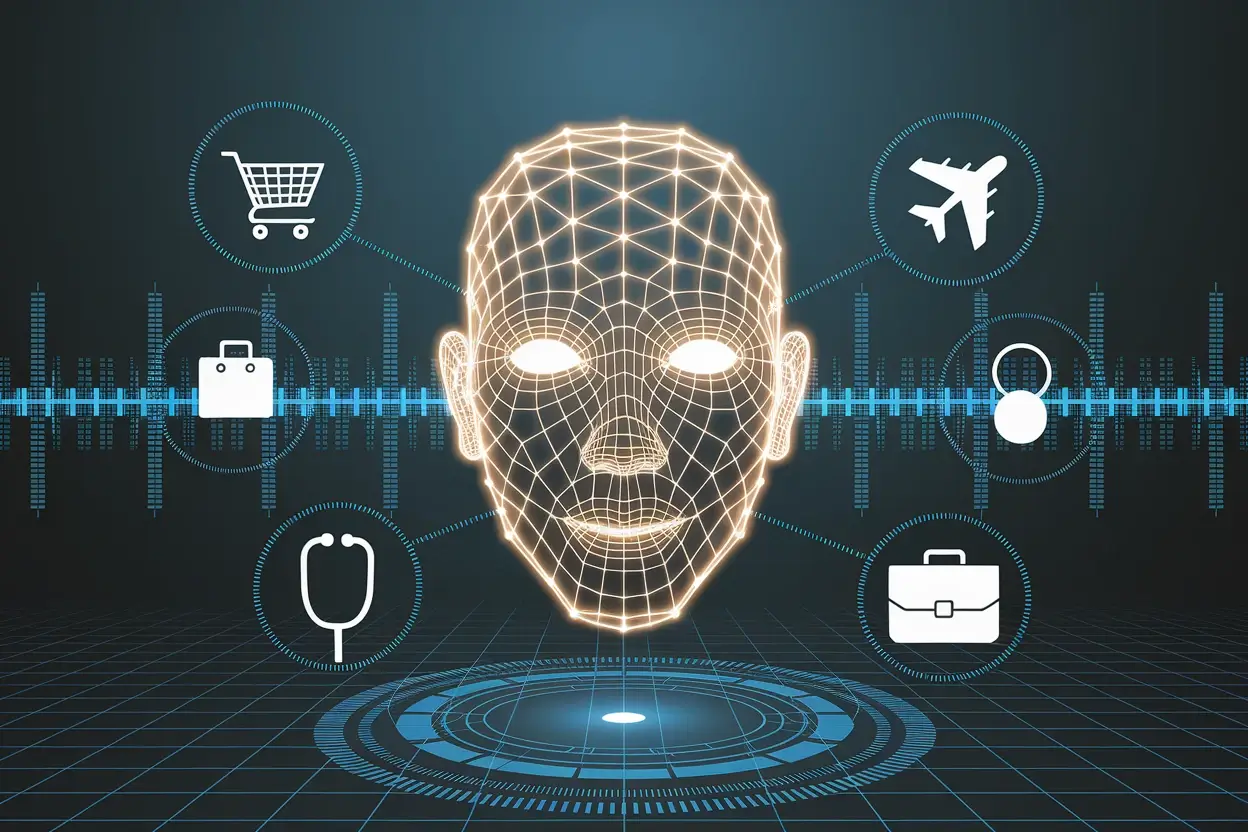Protecting Your Digital Identity in 2025
In an era where facial recognition technology has become ubiquitous, protecting your digital privacy has never been more critical. From social media platforms to surveillance systems, your face is constantly being scanned, analyzed, and stored. This comprehensive guide will help you understand the risks and take actionable steps to protect your digital identity.
The Current Privacy Landscape
- • 89% of people underestimate their digital footprint
- • Average person appears in 300+ online photos
- • 67% of facial recognition use is undisclosed
- • Data brokers collect biometric information
- • Cross-platform face matching is increasing
- • GDPR biometric data protection
- • California Consumer Privacy Act (CCPA)
- • Illinois Biometric Information Privacy Act
- • EU AI Act facial recognition limits
- • State-level facial recognition bans
Face Recognition Privacy Risks
Criminals can use your facial data to create deepfakes, bypass facial recognition security, or impersonate you online. This risk increases with the amount of facial data available.
Real Example: In 2023, thieves used AI-generated faces based on social media photos to unlock victim's smartphones and access bank accounts.
Your movements can be tracked across cameras, stores, and public spaces. This creates detailed profiles of your behavior, relationships, and activities.
- • Retail stores tracking shopping patterns
- • Government surveillance systems
- • Social media location tagging
- • Cross-platform identity linking
Companies profit from your biometric data by selling it to advertisers, employers, insurers, and other third parties without your explicit consent.
Your Legal Rights & Protections
- • Right to be informed
- • Right of access
- • Right to rectification
- • Right to erasure
- • Right to data portability
- • Right to object
- • Know what data is collected
- • Delete personal information
- • Opt-out of data sales
- • Non-discrimination rights
- • Access personal information
- • Written consent required
- • Data retention limits
- • Disclosure restrictions
- • Right to destruction
- • Legal remedies available
Comprehensive Protection Strategies
Photo Management
- Review and delete unnecessary photos from social media
- Remove photos from cloud storage you no longer need
- Use face-blurring tools for public photos
- Avoid posting photos with clear facial features
Account Security
- Enable two-factor authentication on all accounts
- Use strong, unique passwords
- Regularly review account permissions
- Limit app access to photos and camera
Technical Solutions
- • Use VPN services
- • Browse with Tor
- • Use privacy-focused browsers
- • Enable ad blockers
- • Use encrypted messaging
Physical Protection
- • Wear masks in public
- • Use anti-facial recognition glasses
- • Vary your appearance
- • Be aware of camera locations
- • Use makeup techniques
Legal Actions
- • File GDPR requests
- • Submit CCPA requests
- • Report violations
- • Join class action suits
- • Contact privacy advocates
How to Remove Your Photos from the Internet
Step 1: Identify Where Your Photos Appear
Use reverse image search tools like FaceSearch AI to find where your photos appear online.
- • Search your own photos regularly
- • Check social media platforms
- • Look for data broker sites
- • Monitor news and blog sites
Step 2: Contact Website Owners
Reach out directly to websites hosting your photos without permission.
- • Use professional, polite language
- • Provide specific URLs and evidence
- • Reference relevant privacy laws
- • Set reasonable deadlines
Step 3: Use Legal Channels
If direct contact fails, escalate through legal means.
- • File DMCA takedown notices
- • Submit GDPR deletion requests
- • Use Google's removal tool
- • Contact hosting providers
Step 4: Professional Services
Consider hiring professionals for persistent cases.
- • Online reputation management firms
- • Privacy lawyers
- • Digital forensics experts
- • Specialized removal services
Monitoring & Detection Tools
FaceSearch AI
Advanced facial recognition search to find your photos across the internet.
- • Comprehensive database coverage
- • Real-time monitoring alerts
- • Privacy-focused approach
Google Alerts
Set up alerts for your name and variations to catch new appearances.
Yandex Images
Powerful reverse image search with extensive database coverage for finding photo duplicates.
- Search for yourself monthly using multiple tools
- Use variations of your name and nicknames
- Search for photos from different time periods
- Document all findings with screenshots
- Track removal requests and responses
- Set up regular monitoring schedules
Future Privacy Considerations
Emerging Protections
- • AI-powered privacy tools
- • Blockchain identity verification
- • Advanced encryption methods
- • Biometric data tokenization
- • Zero-knowledge proof systems
Growing Threats
- • Deepfake technology advancement
- • IoT device facial recognition
- • Cross-platform data correlation
- • Real-time identity tracking
- • Predictive behavior modeling
Take Control of Your Digital Privacy Today
Protecting your digital privacy in the age of facial recognition requires ongoing vigilance and proactive measures. While you can't completely eliminate your digital footprint, you can significantly reduce your exposure and maintain greater control over your personal information.
Your Privacy Action Plan:
- 1. Audit your current digital presence using face search tools
- 2. Implement immediate protective measures on all social media accounts
- 3. Contact websites to remove unauthorized photos
- 4. Set up ongoing monitoring to catch new appearances
- 5. Stay informed about privacy laws and your rights
Found this guide helpful? Share it with others!

Social Media Privacy Settings